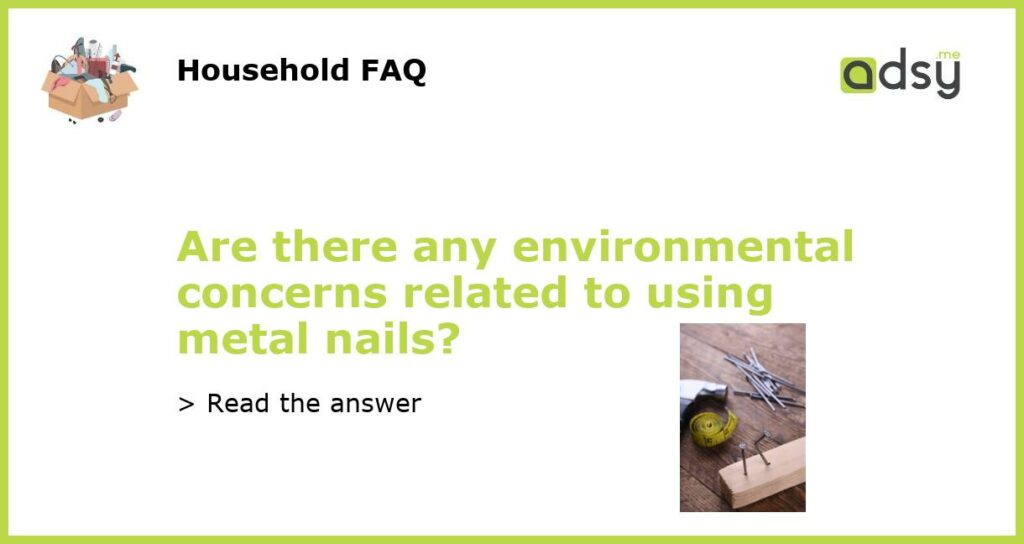Understanding the Environmental Impact of Metal Nails Use
From construction sites to DIY projects, metal nails are a common fixture in many industries. However, as the world continues to grapple with environmental concerns, it is essential to evaluate the impact that metal nails can have on the planet.
In this article, we will explore the environmental concerns related to using metal nails, discuss their impact on the environment, and highlight potential solutions to minimize their negative effects.
The Environmental Impact of Metal Nails on Soil
When metal nails are improperly disposed of, they can have a considerable impact on the soil. Over time, the metal in the nails can contaminate the soil and render it unfit for farming or gardening. This is because metal contamination can affect the soil pH value and alter its chemical composition, which can have long-lasting effects on the ecosystem.
Additionally, discarded nails can pose a threat to wildlife, particularly birds and other animals that may ingest them by mistake. The sharp edges of the nails could cause significant harm and be lethal. This highlights the need for proper disposal of metal nails to reduce their environmental impact.
The Impact of Metal Nails on the Air and Water Quality
When metal nails are exposed to air and water, they can oxidize, leading to rust formation. The rust can get washed away into nearby water sources and disrupt the aquatic ecosystem. Furthermore, polluted water sources are potentially harmful to human consumption and can trigger algae blooms or other environmental challenges.
When metal nails rust, they can release toxic chemicals that can contaminate the surrounding air. This can be dangerous for nearby residents, particularly those with respiratory issues. Welding and cutting the metal nails can also release harmful gases that can further harm the environment.
The Solution: Environmentally Friendly Nails and Proper Disposal Techniques
The good news is that there are eco-friendly alternatives to metal nails that can help to minimize their environmental impact. For instance, many construction companies have opted for eco-friendly nails made of bio-plastic, which are biodegradable and do not contaminate the soil or water sources.
For proper disposal of metal nails, it is essential to use appropriate disposal techniques. This includes using dedicated metal recycling centers or contacting the local waste disposal authorities for guidance on safe disposal methods. When handling metal nails, it is also essential to wear protective gear to avoid injury.
The Need to Embrace Eco-Friendly Solutions
Metal nails have become a staple in many industries, but their environmental impact cannot be overlooked. As the world continues to grapple with environmental concerns, it is vital to embrace eco-friendly solutions that can help to minimize the negative impact of metal nails on the environment. By adopting proper disposal techniques and using eco-friendly options, we can ensure that our actions do not negatively affect future generations.






